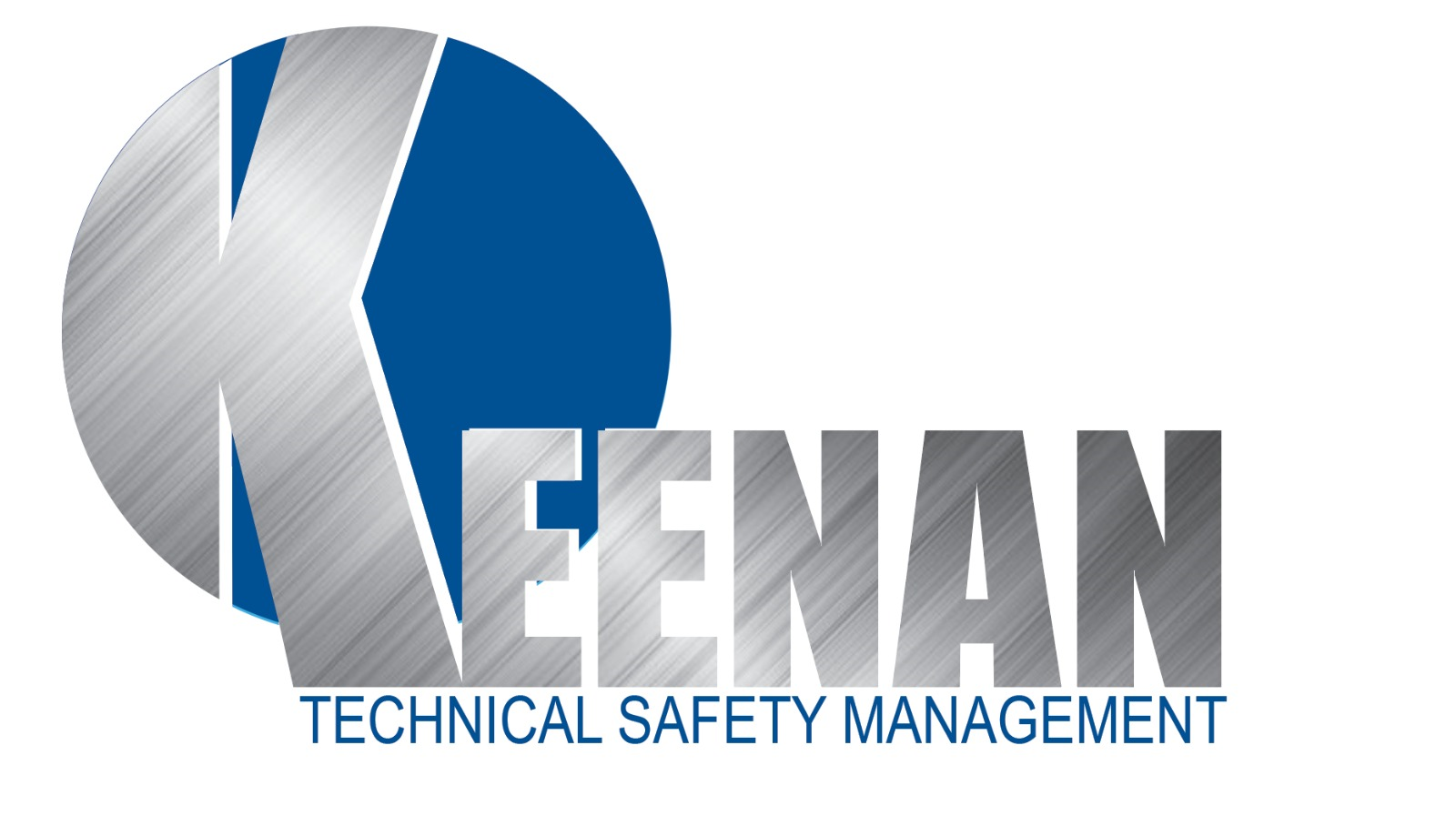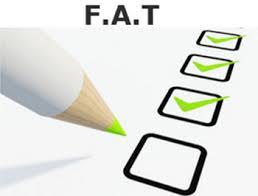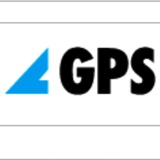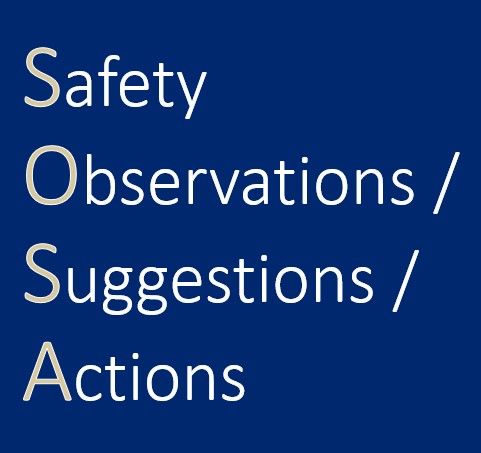Information
-
AS 4024-1502:2019 Validation of Machinery
-
Document No.
-
Client / Site
-
Conducted on
-
Prepared by
Scope of this Document
Objective and Scope
Validation
Standards Referenced in this document
Document Version
-
Revision Number
-
Revision Reason
-
By whom
Executive Summary
Details:
-
undefined
Phase 1 - Mechanical & Integrated Safeguards
Documentation Reviewed
-
Risk Assessment reviewed
-
Are there Functional Safety Descriptions (FSDs) available?
-
Check with OEM for pre start checklists of safety functions. They should be reasonably expected to share this along with the Functional Safety Descriptions
-
Is an SRS (Safety Requirements Specifications) available?
-
Is there a SISTEMA report or similar?
-
Is there any FAT or pre-start commissioning checklists available?
-
Document Number:
-
Is the Performance Level of the machinery determined by OEM or Risk Assessment
-
What is the required PLr for the machinery? [From risk assessment or site minimum requirement.]
-
Are all tasks and hazards associated identified in the risk assessment
- Yes
- No
- Yes but combined with other safeguards such as ESPE
- Integration to other machinery may give rise to further analysis
Machine Identification
-
Type of Machinery
- Packaging
- Processing
- Conveyors
- ASRS
- Distribution
- Manual Handling or Ergonomic Handling
- Potato Recieval
- Services
- WWTP
- Bag Makers
- Milling
- Forklifts or PTO
- Agronomy
- Bin Lifters
- Automatic Case Packers
- Robotic Palletisers
- Potato Peelers
- Potato Washers
- Potato Receival
- Sealing and Taping Machinery
- Carton Erectors
- Slicers
- Auto Halvers
- Optical Sorters
- Seasoning
- Flavour Application
- Automatic Feeder
- Print Unit
- Distribution
- Palletiser
- Stacker
- Strapper
- Roller conveyor
- Die-cutter
- Dryer
- Waste Auger
- Stretch Wrapper
- Pallet Loader
- Pallet Inserter
- Pallet Stacker
- Tote Washer
- Decant Station
- Picking Station
- Shrink Wrapper
- Fruit / Vegetable Slicer
- Bakery - Mixer
- Bakery - Dough Preparation
- Bag Sealer
- Bakery - Dough Prover
- Bakery - Oven
- Truck / Vehicle Washer
- Inspection System (totes / boxes)
- Automatic Carton Erector
- Conveyor Cross overs
- Robotic Element
- Mining - CNV Drive End
- Mining - CNV Head End
- Mining - CNV Mid Point
- Scissor Lift - Spring type
- Scissor Lift - Automated
- EWP
- Rail Mounted Crane (Mini-load)
- MIR - small (> 1200mm x 1200mm)
- Rail Mounted High Bay Crane
-
Basic machine operation
-
Photo
-
Installation type
-
Manufacturer of Machine
-
Machine Model Number
-
Machine Serial Number
Documentation Reviewed
-
Document Type
-
Document Number
Machinery Safeguarding Analysis
-
Area of machine:
-
Safeguards are required on this machine.
-
Type of Safeguards
-
Safeguards selected are the appropriate type for the process
-
Detail Recommended Actions
-
Safeguards are fixed in place and secured by appropriate fixings and correctly interlocked?
-
Detail Recommended Actions
-
All identified gaps are considered compliant
-
Detail Recommended Actions
-
Safeguards prevent access to dangerous moving parts?
-
Detail Recommended Actions
-
A tool is required to remove existing guarding.
-
Guarding is Compliant when (According to ISO14119) guard fixings are considered tamperproof and robust enough to withstand tampering.
-
Is there a permit system in place prior to the removal of guarding. (Safe System of Work)
-
Supervision of all tools required to open guards is strongly recommended. Operators and cleaners for example should not have uncontrolled access. FLM or local supervisor should retain and log usage of such tools for verification (incident management). It is normal for maintenance to have access to such tools.
-
Are all electrical fixtures are covered and locked.
-
Detail Recommended Actions
-
All electrical cabinets, MCC's DB's and control boxes must be securely fitted with covers and locked at all times such that only certified electrical personnel have access. Per AS/NZS 3000:2008
-
Machinery has integrated safeguarding (eg two-handed or hold-to-run jog operation) allowing operation through guards [not whole of body access]
-
See details in Predictable Failure Testing
-
Walkways, platforms, self-closing gates and guard rails are used to allow safe access to machinery?
-
Are they compliant?
-
Detail Recommended Actions
-
Monitoring, adjustment or maintenance points are located outside the guarded area to allow safe maintenance.
-
Is LOTO isolation present on the machinery and appropriately located outside of the guarded or hazardous areas?
-
Electrical Isolator is fitted
-
Pneumatic Isolator is fitted
-
Hydraulic Isolator is fitted
-
Steam Isolator is fitted
Phase 2 - Safety Controls System Validation
Phase 2 Validation of the Logic System
-
What SRPCS Safety logic system is used?
- Safety Relays
- Safety Configurable Relays
- Safety PLC
- No Safety Logic Required
- Combination of Safety Logic and Safety Relays
- Safety Logic required but not installed
-
Is there an SSRS available or evidence of safety software fault testing?
-
Enter into documents reviewed list if not already done.
- Test Concurrent or Sequential Muting
- Test Override is not permanent
- Test Muting Lamp Feedback (where fitted)
- Light Curtains Revert to normal operation post mute
-
How has the software been checked for errors and systematic failures?
-
All the safety logic devices securely mounted (DIN rail or screw base etc)
-
All the connections to the safety devices secure?
-
What is the PL acheived (as tested or evaluated)?
-
PL actual meets or exceeds PLr (PL required)
-
PL actual does not meet PLr (PL required)
Machinery Normal Operation
-
Verify that the Machine can be placed into a ready-to-run condition
-
Initial Condition: Machine is Idle - contractors open , drives off
-
Verify that all safety contactors are closed (Contactors and Pneumatic / Hydraulic Safety Valves are energised.)
-
Verify all emergency stop pushbuttons are released, and door switches are in a safe state
-
Verify that Safety Relay is healthy.
-
Start the machine.
Testing Criteria for Safety Related Control Systems
Phase 3 - Predictable failure testing
Fault testing Analysis of Safety Control System
-
Emergency Stops & Lanyard Switches
-
Device ID
Testing Criteria
-
As per AS 4024-2:2012 (EN ISO 13849-2:2012)
-
Emergency Stops & Lanyard Switches SRPCS Testing
- Cross Short Test between input Channels (Cat 3 & 4)
- Input Channel Lost Signal (removal of one channel)
- 24vDC intrusion
- Earth Fault or 0v test where applicable
-
Cross Short Test Result
-
Details of failure and remedial action required.
-
Input Channel Loss Test Results
-
Details of failure and remedial action required.
-
24Vdc intrusion Test Results
-
Details of failure and remedial action required.
-
Earth Fault Test Results
-
Details of failure and remedial action required.
Interlock Switches
-
Device ID
-
What type of switch is this?
Testing Criteria
-
As per AS 4024-2:2012 (EN ISO 13849-2:2012)
-
Interlock Switches SRPCS Testing
- Cross Short Test between input Channels (Cat 3 & 4)
- Input Channel Lost Signal (removal of one channel)
- 24vDC intrusion
- Earth Fault or 0v test where applicable
-
Cross Short Test Result
-
Details of failure and remedial action required.
-
Input Channel Loss Test Results
-
Details of failure and remedial action required.
-
24Vdc intrusion Test Results
-
Details of failure and remedial action required.
-
Earth Fault Test Results
-
Details of failure and remedial action required.
ESPE Validation
-
Device ID
Testing Criteria
-
As per AS 4024-2:2012 (EN ISO 13849-2:2012)
-
What type of ESPE are used on this machinery?
- Type 4 Safety Light Barriers (Res > 14mm) Finger Resolution
- Type 4 Safety Light Barriers (Res > 40mm<14mm) hand resolution
- Type 4 Safety Single Beam Sensors
- Type 4 Safety Light Curtains (Res <40mm)
- Safety Laser Scanner (Cat3,PLd)
- Type 2 Safety Light Curtains (Res >40mm<14mm) Hand Resolution
- Type 2 Safety Light Barriers (Res > 14mm) Finger
- Safety Bumpers - PLd
- Safety Edges - PLd
- Safety Mats - PLd
-
Are safety stopping distances correct to prevent reaching the hazard? See standards such as AS4024:2801 for guidance
-
Details of any limitations preventing correct placement with respect to AS4024:2801 or schedule action for relocation.
-
Compliant
-
Are safety devices mounted correct height above the floor or conveyor to protect against unauthorized entry - see ISO13855:2010 and AS4024:2801 for guidance
-
Details of any limitations preventing correct placement with respect to AS4024:2801 or schedule action for relocation.
-
Compliant
-
Are ESPE's selected the correct type for the application?
-
Is muting required on this set up
-
Muting testing required
- Test Concurrent or Sequential Muting
- Test Override is not permanent
- Test Muting Lamp Feedback (where fitted)
- Light Curtains Revert to normal operation post mute
-
ESPE Testing
-
Removal of OSSD test
-
Details of failure and remedial action required.
-
Removal of Output Channel test<br>
-
Details of failure
RESET & Feedback circuit testing
-
Device ID
Testing Criteria
-
RESET feedback circuit testing
- Removal of Feedback to Safety Relay / PLC
- Short Circuit of Feedback Auxiliary Contact
- Short Circuit of RESET Switch (Anti Tie Down Test)
-
Removal of feedback Test Result
-
Details of failure and remedial action required.
-
Short circuit of feedback Test Results
-
Details of failure and remedial action required.
-
Short circuit of RESET Test Results
-
Details of failure and remedial action required.
Complementary Measures (other than ESTOPs)
-
Device ID
Testing Criteria
-
As per AS 4024-2:2012 (EN ISO 13849-2:2012) & EN574 III
-
Complementary Safety Measures Used?
- Two Hand Controls
- Enable Switches - Hold To Run
- Safe Speed Monitoring
- Standstill Monitoring
- Foot Switches
- None Used
-
For testing Two Hand Controls or Hold to Run Enable switches
- Hold one switch and after 1 second operate the second switch
- Operate both switch simultaneously - then release one switch
-
Machine does not start when tested like this
-
When one switch is released the machine stops
-
Simultaneity validation testing results
-
Hold down test validation results
-
Establish safe conditions and record test
-
Confirm the Performance Level of the machinery as tested?
-
Does this meet the requirement for the client and this type of machinery per standards?
-
Confirm the Performance Level from the OEM / Integrator
-
What if any improvements need to be made to establish the correct Performance Level
-
Can the machinery be operated safely as tested?
-
What immediate actions are recommended to allow machinery operation
Validation Sign Off
Confirmation of Validation Result
-
Overall Validation Testing Result
-
Refer to action items list.
-
Re-validated following completeion of action items
-
Signed
-
Validated By
-
Signature
-
Validated By
-
Signature












